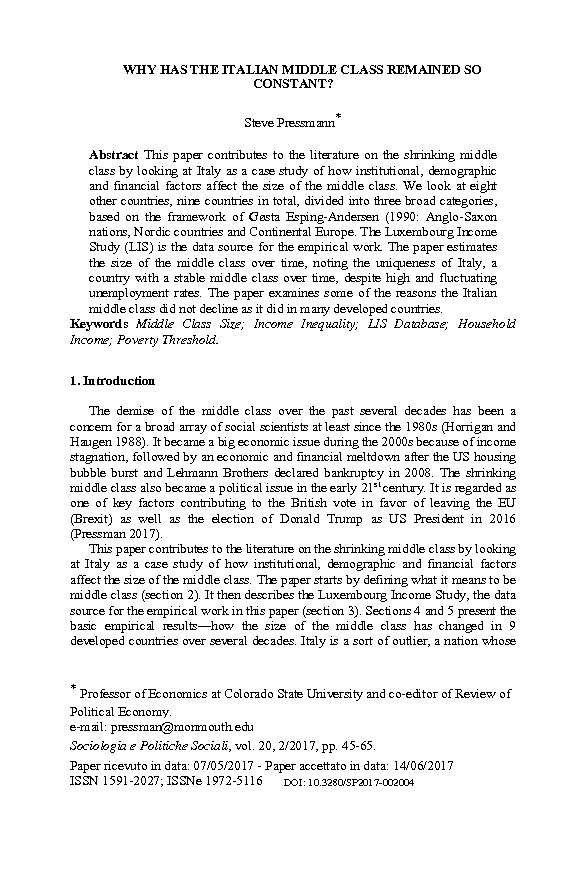Why has the italian middle class remained so constant?
45-65 p.
This paper contributes to the literature on the shrinking middle class by looking at Italy as a case study of how institutional, demographic and financial factors affect the size of the middle class. We look at eight other countries, nine countries in total, divided into three broad categories, based on the framework of Gøsta Esping-Andersen (1990: Anglo-Saxon nations, Nordic countries and Continental Europe. The Luxembourg Incomey (LIS) is the data source for the empirical work. The paper estimates the size of the middle class over time, noting the uniqueness of Italy, a country with a stable middle class over time, despite high and fluctuating unemployment rates. The paper examines some of the reasons the Italian middle class did not decline as it did in many developed countries. [Publishers' text].
Fa parte di
Sociologia e politiche sociali : 2, 2017-
Articoli dello stesso fascicolo (disponibili singolarmente)
-
Informazioni
Codice DOI: 10.3280/SP2017-002004
ISSN: 1972-5116
PAROLE CHIAVE
- Middle Class Size, Income Inequality, LIS Database, Household Income, Poverty Threshold



